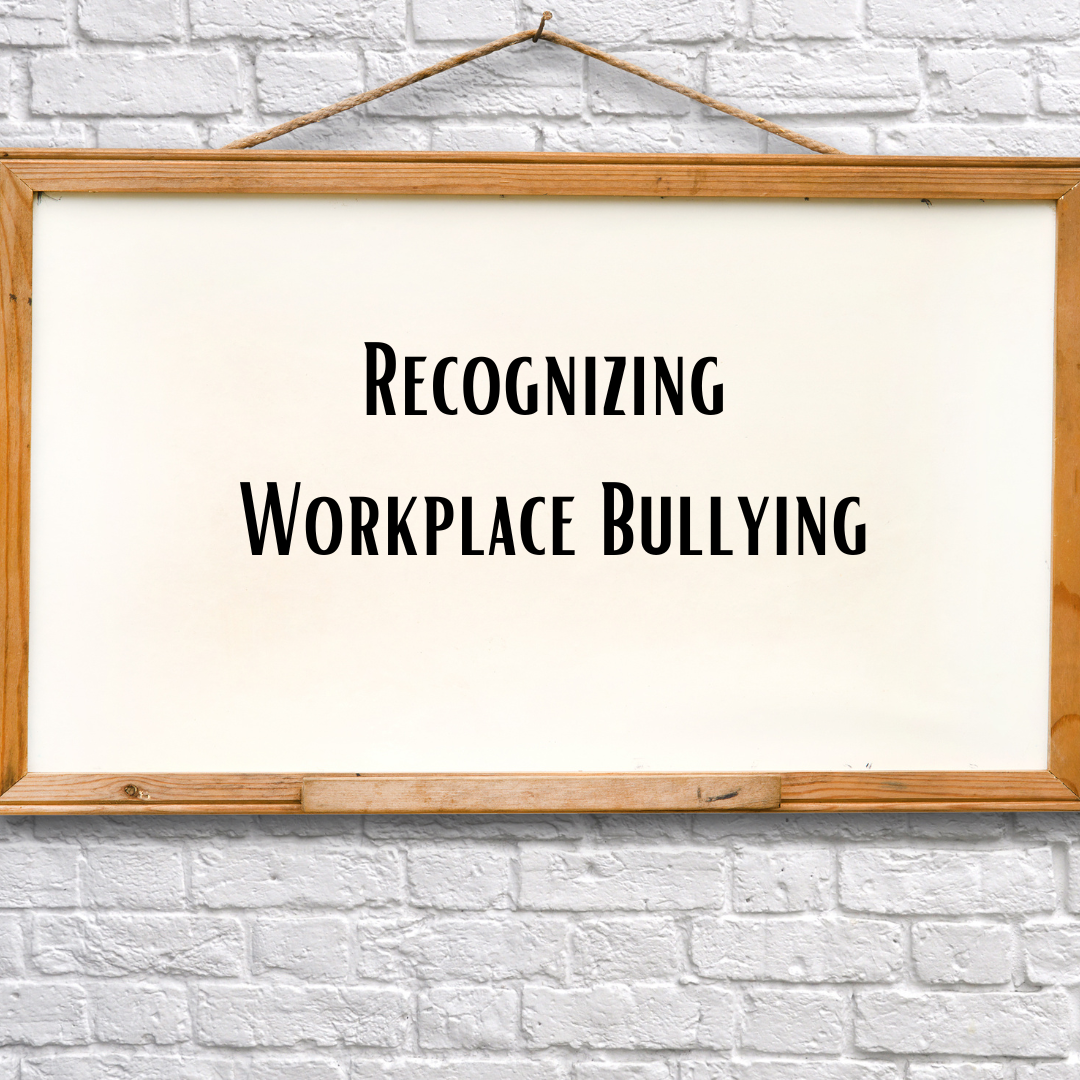Workplace bullying is a complex issue that often eludes easy identification. It can wear various disguises, sometimes blending into daily routines as seemingly ordinary behavior. However, the pervasiveness and persistence of workplace bullying set it apart. It's a daily occurrence, with colleagues, and occasionally even superiors, engaging in behaviors that erode the well-being of individuals and the overall work environment.
Recognizing Workplace Bullying Dynamics:
One key indicator of workplace bullying is the presence of bystanders who remain passive or, worse, participate in the bullying. This phenomenon is often fueled by a culture of fear and intimidation, revealing dysfunctional group dynamics where bullying becomes normalized.
Additionally, when organizational leadership remains indifferent or, in some cases, blames and retraumatizes the victim, it further perpetuates the cycle of workplace bullying. This lack of intervention from higher-ups can create an environment where the toxic behavior is allowed to flourish unchecked.
Identifying Patterns of Aggressive Behavior:
Verbal Abuse:
Workplace bullying frequently manifests as verbal abuse, with insults, offensive language, or belittling comments directed at an individual. Pay attention to the consistent use of derogatory language as a clear sign of this harmful behavior.
Humiliation:
Attempts to humiliate or embarrass an individual, whether privately or publicly, are common in workplace bullying scenarios. Public humiliation can significantly impact an individual's self-esteem and overall well-being.
Intimidation:
The use of intimidation tactics, such as threatening behavior, physical gestures, or aggressive posturing, is a clear red flag. Intimidation aims to create fear and exert control over the targeted individual.
Exclusion:
Bullying often involves isolating targets by excluding them from group activities, meetings, or social gatherings. Deliberate exclusion contributes to a hostile work environment and is a tactic employed by bullies.
Recognizing Subtle Signs:
Persistent Criticism:
While constructive feedback is essential for growth, constant unwarranted criticism without constructive guidance is a form of bullying. Mindfully assess the intention behind the feedback to identify subtle bullying behavior.
Gossip:
Workplace gossip can become a form of bullying when it turns malicious and aims to tarnish someone's reputation. Consistent patterns of gossip targeting a specific individual are indicative of a toxic work environment.
Sabotage:
Deliberate actions to undermine a colleague's work or career progression indicate a toxic work environment. Sabotage can take various forms, such as withholding crucial information, spreading false rumors, or interfering with projects.
Recognizing workplace bullying is the initial step in creating a healthier work environment. By identifying and addressing patterns of aggressive behavior, individuals can contribute to fostering a workplace culture that values respect, collaboration, and personal well-being. Everyone deserves to work in an environment free from bullying, where their contributions are acknowledged and appreciated.
Recognizing Workplace Bullying Dynamics:
One key indicator of workplace bullying is the presence of bystanders who remain passive or, worse, participate in the bullying. This phenomenon is often fueled by a culture of fear and intimidation, revealing dysfunctional group dynamics where bullying becomes normalized.
Additionally, when organizational leadership remains indifferent or, in some cases, blames and retraumatizes the victim, it further perpetuates the cycle of workplace bullying. This lack of intervention from higher-ups can create an environment where the toxic behavior is allowed to flourish unchecked.
Identifying Patterns of Aggressive Behavior:
Verbal Abuse:
Workplace bullying frequently manifests as verbal abuse, with insults, offensive language, or belittling comments directed at an individual. Pay attention to the consistent use of derogatory language as a clear sign of this harmful behavior.
Humiliation:
Attempts to humiliate or embarrass an individual, whether privately or publicly, are common in workplace bullying scenarios. Public humiliation can significantly impact an individual's self-esteem and overall well-being.
Intimidation:
The use of intimidation tactics, such as threatening behavior, physical gestures, or aggressive posturing, is a clear red flag. Intimidation aims to create fear and exert control over the targeted individual.
Exclusion:
Bullying often involves isolating targets by excluding them from group activities, meetings, or social gatherings. Deliberate exclusion contributes to a hostile work environment and is a tactic employed by bullies.
Recognizing Subtle Signs:
Persistent Criticism:
While constructive feedback is essential for growth, constant unwarranted criticism without constructive guidance is a form of bullying. Mindfully assess the intention behind the feedback to identify subtle bullying behavior.
Gossip:
Workplace gossip can become a form of bullying when it turns malicious and aims to tarnish someone's reputation. Consistent patterns of gossip targeting a specific individual are indicative of a toxic work environment.
Sabotage:
Deliberate actions to undermine a colleague's work or career progression indicate a toxic work environment. Sabotage can take various forms, such as withholding crucial information, spreading false rumors, or interfering with projects.
Recognizing workplace bullying is the initial step in creating a healthier work environment. By identifying and addressing patterns of aggressive behavior, individuals can contribute to fostering a workplace culture that values respect, collaboration, and personal well-being. Everyone deserves to work in an environment free from bullying, where their contributions are acknowledged and appreciated.

